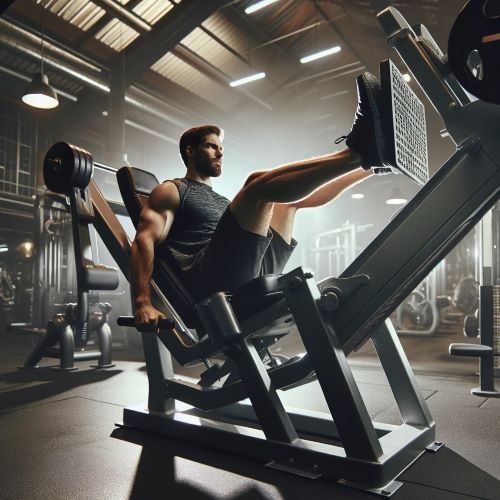Introduction
Embarking on a fitness journey introduces you to a plethora of exercises, each targeting specific muscle groups and offering unique benefits. Among these, the leg press stands out as a fundamental workout for strengthening the lower body. It’s a question that lingers in the minds of many fitness enthusiasts: “How much should I be able to leg press?” The answer isn’t straightforward and varies based on several factors. This article delves into the nuances of the leg press, helping you understand your own potential and how to safely enhance your leg press capabilities.
Understanding the Leg Press
The leg press is a versatile exercise performed on a leg press machine, which allows you to push weight away from your body using your legs. It primarily targets the quadriceps, hamstrings, gluteus maximus, and calves. The controlled environment of the leg press machine makes it a safer alternative to traditional squats, especially for those with back issues.
Factors Influencing Leg Press Capability
- Age and Gender: Age and gender significantly impact muscle strength and endurance. Younger individuals and males typically have higher muscle mass, contributing to greater leg press capabilities.
- Body Weight and Composition: Heavier individuals often have the capacity to leg press more due to larger muscle mass. However, the ratio of muscle-to-fat plays a crucial role in determining actual strength.
- Training Experience: Regular training leads to muscle adaptation, increasing strength and endurance over time. Experienced lifters can leg press more than novices.
- Leg Length and Mechanics: Individual biomechanics, including leg length and joint health, can influence leg press performance.
Average Leg Press Benchmarks
While there’s no one-size-fits-all answer, certain benchmarks can provide a rough guideline. For instance, a beginner might aim to leg press around 1.5 times their body weight, whereas more experienced lifters could target 2 to 2.5 times their body weight or more. These figures are highly variable and should be adjusted based on personal health, fitness level, and goals.
Benefits of Leg Pressing
- Muscle Growth and Strength: Regularly performing leg presses can lead to significant gains in lower body strength and muscle hypertrophy.
- Joint Health: The leg press can strengthen the muscles around the knees and hips, potentially improving joint health and stability.
- Versatility: Adjustments in foot placement on the leg press platform can target different muscle groups, adding variety to your workout routine.
Safely Increasing Your Leg Press
- Proper Form: Maintaining correct form is paramount to prevent injuries. Ensure your back is flat against the seat and avoid locking your knees at full extension.
- Progressive Overload: Gradually increase the weight you leg press over time. A conservative approach is to increase the weight by no more than 10% when you can comfortably complete your target reps and sets.
- Rest and Recovery: Allow adequate recovery time between leg press sessions to facilitate muscle repair and growth.
Common Mistakes to Avoid
- Overloading the machine before you’re ready, risking injury.
- Sacrificing form for heavier weights.
- Neglecting other lower body exercises, leading to muscle imbalances.
Conclusion
Determining how much you should leg press involves considering multiple factors, including your fitness level, body composition, and personal goals. It’s essential to start conservatively, focus on proper form, and gradually increase the weight as your strength improves. Remember, the leg press is just one component of a well-rounded fitness regimen. Incorporating a variety of exercises, prioritizing safety, and listening to your body are key to achieving balanced and sustainable physical fitness.







